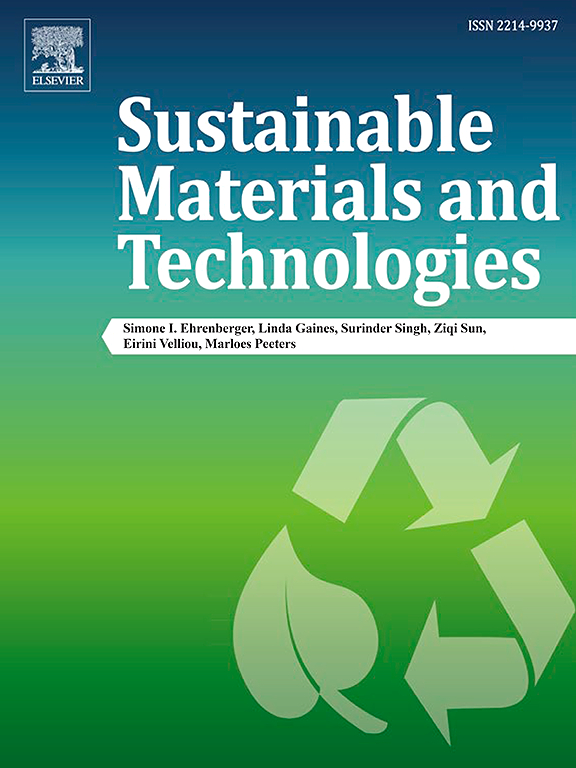Transforming organic waste: Cabbage-derived carbon containing copper for electrochemical sensing of ascorbic acid
IF 9.2
2区 工程技术
Q1 ENERGY & FUELS
引用次数: 0
Abstract
This study presents a sustainable approach for transforming food waste into functional electrochemical materials by utilizing copper-enriched cabbage leaves as a precursor for carbon-based sensors. Chinese cabbage was soaked in aqueous solutions of Cu(NO₃)₂, CuSO₄, and Cu(CH₃COO)₂, followed by pyrolysis, which resulted in carbonaceous materials with distinct structural and electrochemical characteristics. Raman spectroscopy and XPS confirmed the formation of both amorphous and crystalline carbon domains and the presence of copper in various oxidation states. Among the synthesized materials, the carbon derived from cabbage soaked in 0.5 M Cu(NO₃)₂ and pyrolyzed from the middle part of the leaf exhibited superior electrochemical properties. This material demonstrated excellent sensitivity towards ascorbic acid detection equal to 3.91 μA/μM·cm2, with a linear response ranging from 0.2 μM to 7 mM, and a detection limit of 0.05 μM. The sensor showed high selectivity in the presence of interfering species and performed well in real sample analysis using orange juice. These results demonstrate the potential of upcycled cabbage waste as a low-cost, green precursor for electrochemical sensing platforms, offering both environmental and biomedical benefits.

转化有机废物:用于抗坏血酸电化学传感的含铜卷心菜衍生碳
本研究提出了一种可持续的方法,利用富含铜的卷心菜叶作为碳基传感器的前体,将食物垃圾转化为功能性电化学材料。用Cu(NO₃)2、CuSO₄和Cu(CH₃COO) 2水溶液浸泡大白菜,并进行热解,得到了具有独特结构和电化学特征的碳质材料。拉曼光谱和XPS证实了无定形和晶体碳畴的形成以及铜在各种氧化态的存在。在合成的材料中,从0.5 M Cu(NO₃)2中浸泡的白菜中提取的碳从叶子中部热解得到的碳表现出优异的电化学性能。该材料检测抗坏血酸的灵敏度为3.91 μA/μM·cm2,线性响应范围为0.2 μM ~ 7 mM,检出限为0.05 μM。该传感器在干扰物存在下具有较高的选择性,在橙汁实际样品分析中表现良好。这些结果表明,升级回收的卷心菜废料作为电化学传感平台的低成本、绿色前体的潜力,具有环境和生物医学效益。
本文章由计算机程序翻译,如有差异,请以英文原文为准。
求助全文
约1分钟内获得全文
求助全文
来源期刊

Sustainable Materials and Technologies
Energy-Renewable Energy, Sustainability and the Environment
CiteScore
13.40
自引率
4.20%
发文量
158
审稿时长
45 days
期刊介绍:
Sustainable Materials and Technologies (SM&T), an international, cross-disciplinary, fully open access journal published by Elsevier, focuses on original full-length research articles and reviews. It covers applied or fundamental science of nano-, micro-, meso-, and macro-scale aspects of materials and technologies for sustainable development. SM&T gives special attention to contributions that bridge the knowledge gap between materials and system designs.
 求助内容:
求助内容: 应助结果提醒方式:
应助结果提醒方式:


